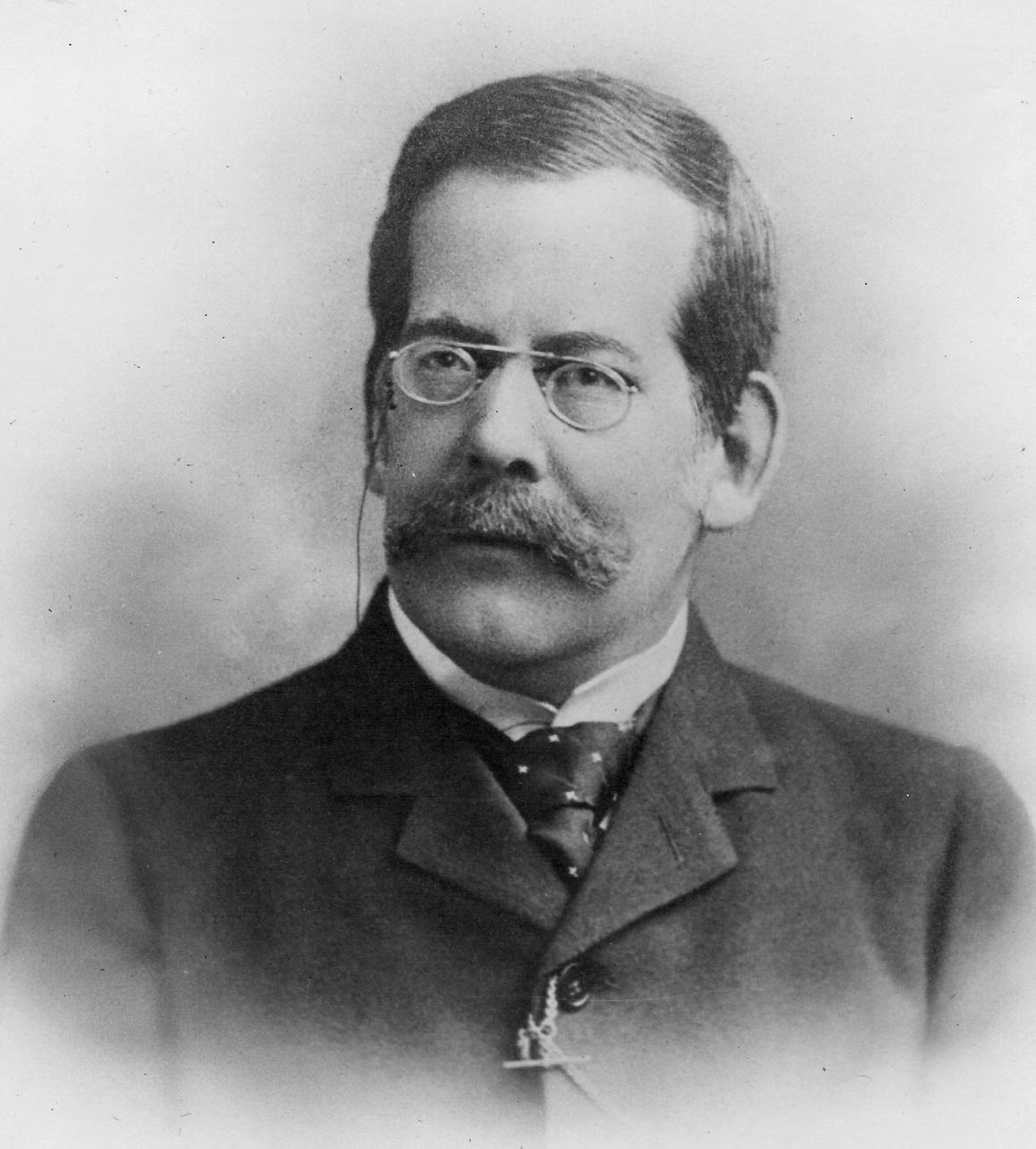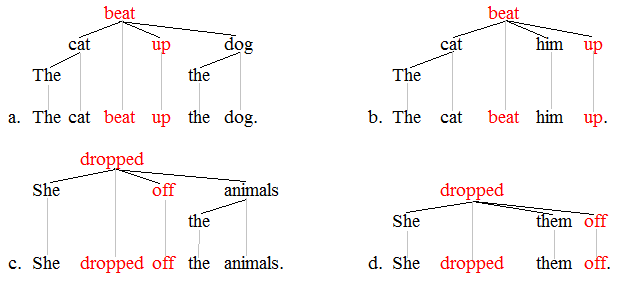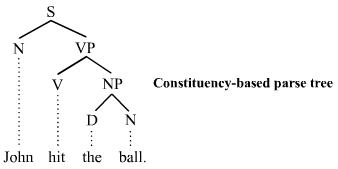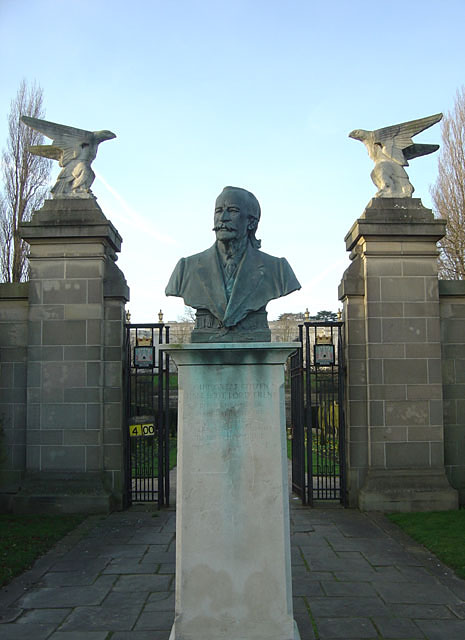|
Lexical Approach
The lexical approach refers to various methods of language education, teaching foreign languages with focus on lexical units of various sizes. On the smaller end, the lexical approach refers to teaching practices where vocabulary learning sets the preliminary ground for further language learning. Paul Nation#Research, Paul Nation, Laufer and others have been influential in this field, with various techniques to quickly expand the student's vocabulary mostly via vocabulary list learning. On the longer end, it requires to understand and produce lexical phrases as chunks, as described by Michael Lewis (academic), Michael Lewis in the early 1990s. Students are there taught to identify frequent language patterns (grammar), as well as to have sets of words at their disposal. Theory The lexical method concentrates on teaching fixed terms that are common in conversations, which Lewis states make up a bigger portion of speech than original words and sentences. Vocabulary is prized over gram ... [...More Info...] [...Related Items...] OR: [Wikipedia] [Google] [Baidu] |
|
 |
Language Education
Language education refers to the processes and practices of teaching a second language, second or foreign language. Its study reflects interdisciplinarity, interdisciplinary approaches, usually including some applied linguistics. There are four main learning categories for language education: communicative competencies, proficiencies, cross-cultural experiences, and multiple literacies. Need Increasing globalization has created a great need for people in the workforce who can communicate in multiple languages. Common languages are used in areas such as trade, tourism, diplomacy, technology, media, translation, interpretation and science. Many countries such as Korea (Kim Yeong-seo, 2009), Japan (Kubota, 1998) and China (Kirkpatrick & Zhichang, 2002) frame education policies to teach at least one foreign language at the primary and secondary school levels. Further, the governments of some countries more than one official language; such countries include India, Singapore, Malay ... [...More Info...] [...Related Items...] OR: [Wikipedia] [Google] [Baidu] |
|
Paul Nation
Paul Nation (complete name Ian Stephen Paul Nation, born 28 April 1944) is a scholar in the field of linguistics and teaching methodology. As a professor in the field of applied linguistics with a specialization in pedagogical methodology, he created a language teaching framework to identify key areas of language teaching focus. Paul Nation is best known for this framework, which has been labelled The Four Strands. He has also made contributions through his research in the field of language acquisition that focuses on the benefits of extensive reading and repetition as well as intensive reading.Victoria University. School of Linguistics and Applied Language Studies. Staff Directory/ref> Biography Paul Nation is a member of thSchool of Linguistics and Applied Language Studiesdepartment at Victoria University of Wellington, New Zealand. He is well known for his research into the methodology of language teaching and vocabulary learning. Nation is employed at Victoria University ... [...More Info...] [...Related Items...] OR: [Wikipedia] [Google] [Baidu] |
|
 |
Lexical Phrase
In lexicography, a lexical item is a single word, a part of a word, or a chain of words ( catena) that forms the basic elements of a language's lexicon (≈ vocabulary). Examples are ''cat'', ''traffic light'', ''take care of'', ''by the way'', and ''it's raining cats and dogs''. Lexical items can be generally understood to convey a single meaning, much as a lexeme, but are not limited to single words. Lexical items are like semes in that they are "natural units" translating between languages, or in learning a new language. In this last sense, it is sometimes said that language consists of grammaticalized lexis, and not lexicalized grammar. The entire store of lexical items in a language is called its lexis. Lexical items composed of more than one word are also sometimes called ''lexical chunks'', ''gambits'', ''lexical phrases'', ''lexicalized stems'', or ''speech formulae''. The term ''polyword listemes'' is also sometimes used. Types Common types of lexical items/chunks ... [...More Info...] [...Related Items...] OR: [Wikipedia] [Google] [Baidu] |
|
Michael Lewis (academic)
Michael Monroe Lewis (born October 15, 1960) Gale Biography In Context. is an American author and financial journalist. He has also been a contributing editor to '' Vanity Fair'' since 2009, writing mostly on business, finance, and economics. He is known for his nonfiction work, particularly his coverage of financial crises and behavioral finance. Lewis was born in New Orleans and attended Princeton University, from which he graduated with a degree in art history. After attending the London School of Economics, he began a career on Wall Street during the 1980s as a bond salesman at Salomon Brothers. The experience prompted him to write his first book, ''Liar's Poker'' (1989). Fourteen years later, Lewis wrote '' Moneyball: The Art of Winning an Unfair Game'' (2003), in which he investigated the success of the Oakland Athletics baseball team and their general manager Billy Beane. His 2006 book '' The Blind Side: Evolution of a Game'' was his first to be adapted into a film, '' ... [...More Info...] [...Related Items...] OR: [Wikipedia] [Google] [Baidu] |
|
 |
Grammar
In linguistics, grammar is the set of rules for how a natural language is structured, as demonstrated by its speakers or writers. Grammar rules may concern the use of clauses, phrases, and words. The term may also refer to the study of such rules, a subject that includes phonology, morphology (linguistics), morphology, and syntax, together with phonetics, semantics, and pragmatics. There are, broadly speaking, two different ways to study grammar: traditional grammar and #Theoretical frameworks, theoretical grammar. Fluency in a particular language variety involves a speaker internalizing these rules, many or most of which are language acquisition, acquired by observing other speakers, as opposed to intentional study or language teaching, instruction. Much of this internalization occurs during early childhood; learning a language later in life usually involves more direct instruction. The term ''grammar'' can also describe the linguistic behaviour of groups of speakers and writer ... [...More Info...] [...Related Items...] OR: [Wikipedia] [Google] [Baidu] |
|
Vocabulary
A vocabulary (also known as a lexicon) is a set of words, typically the set in a language or the set known to an individual. The word ''vocabulary'' originated from the Latin , meaning "a word, name". It forms an essential component of language and communication, helping convey thoughts, ideas, emotions, and information. Vocabulary can be oral, written, or signed and can be categorized into two main types: active vocabulary (words one uses regularly) and passive vocabulary (words one recognizes but does not use often). An individual's vocabulary continually evolves through various methods, including direct instruction, independent reading, and natural language exposure, but it can also shrink due to forgetting, trauma, or disease. Furthermore, vocabulary is a significant focus of study across various disciplines, like linguistics, education, psychology, and artificial intelligence. Vocabulary is not limited to single words; it also encompasses multi-word units known as c ... [...More Info...] [...Related Items...] OR: [Wikipedia] [Google] [Baidu] |
|
 |
English As A Foreign Or Second Language
English as a second or foreign language refers to the use of English by individuals whose native language is different, commonly among students learning to speak and write English. Variably known as English as a foreign language (EFL), English as a second language (ESL), English for speakers of other languages (ESOL), English as an additional language (EAL), or English as a new language (ENL), these terms denote the study of English in environments where it is not the dominant language. Programs such as ESL are designed as academic courses to instruct non-native speakers in English proficiency, encompassing both learning in English-speaking nations and abroad. Teaching methodologies include teaching English as a foreign language (TEFL) in non-English-speaking countries, teaching English as a second language (TESL) in English-speaking nations, and teaching English to speakers of other languages (TESOL) worldwide. These terms, while distinct in scope, are often used intercha ... [...More Info...] [...Related Items...] OR: [Wikipedia] [Google] [Baidu] |
|
Norbert Schmitt
Norbert Schmitt (born 23 January 1956) is an American applied linguist and Emeritus Professor of Applied Linguistics at the University of Nottingham in the United Kingdom. He is known for his work on second-language vocabulary acquisition and second-language vocabulary teaching. He has published numerous books and papers on vocabulary acquisition. Research Norbert Schmitt began his career in 1988 as an EFL teacher in Japan and quickly became interested in how language learners acquire their second languages. During his Masters study at Temple University, Japan, he began researching how students learn vocabulary in particular. He extended this interest in vocabulary through his PhD research at the University of Nottingham in 1994. Upon completion of his PhD in 1997, he joined the University of Nottingham staff, and taught there until his retirement in September 2020. He is now Emeritus Professor of Applied Linguistics. Prof. Schmitt has researched second language vocabulary iss ... [...More Info...] [...Related Items...] OR: [Wikipedia] [Google] [Baidu] |
|
 |
University Of Nottingham
The University of Nottingham is a public research university in Nottingham, England. It was founded as University College Nottingham in 1881, and was granted a royal charter in 1948. Nottingham's main campus (University Park Campus, Nottingham, University Park) with Jubilee Campus and teaching hospital (Queen's Medical Centre) are located within the City of Nottingham, with a number of smaller campuses and sites elsewhere in Nottinghamshire and Derbyshire. Outside the UK, the university has campuses in Semenyih, Malaysia, and Ningbo, China. Nottingham is organised into five constituent faculties, within which there are more than 50 schools, departments, institutes and research centres. Nottingham has more than 46,000 students and 7,000 staff across the UK, China and Malaysia and had an income of £834.7 million in 2023–24, of which £141.6 million was from research grants and contracts, with an expenditure of £615.3 million. The institution's alumni have been awarded one ... [...More Info...] [...Related Items...] OR: [Wikipedia] [Google] [Baidu] |
|
Communicative Approach
Communicative language teaching (CLT), or the communicative approach (CA), is an approach to language teaching that emphasizes interaction as both the means and the ultimate goal of study. Learners in settings which utilise CLT learn and practice the target language through the following activities: communicating with one another and the instructor in the target language; studying "authentic texts" (those written in the target language for purposes other than language learning); and using the language both in class and outside of class. To promote language skills in all types of situations, learners converse about personal experiences with partners, and instructors teach topics outside of the realm of traditional grammar. CLT also claims to encourage learners to incorporate their personal experiences into their language learning environment and to focus on the learning experience, in addition to learning the target language. According to CLT, the goal of language education is t ... [...More Info...] [...Related Items...] OR: [Wikipedia] [Google] [Baidu] |
|
|
Grammar–translation Method
The grammar–translation method is a method of teaching foreign languages derived from the classical (sometimes called traditional) method of teaching Ancient Greek and Latin. In grammar–translation classes, students learn grammatical rules and then apply those rules by translating sentences between the target language and the native language. Advanced students may be required to translate whole texts word-for-word. The method has two main goals: to enable students to read and translate literature written in the source language, and to further students' general intellectual development. It originated from the practice of teaching Latin; in the early 16th century, students learned Latin for communication, but after the language died out it was studied purely as an academic discipline. When teachers started teaching other foreign languages in the 19th century, they used the same translation-based approach as had been used for teaching Latin. The method has been criticized for it ... [...More Info...] [...Related Items...] OR: [Wikipedia] [Google] [Baidu] |